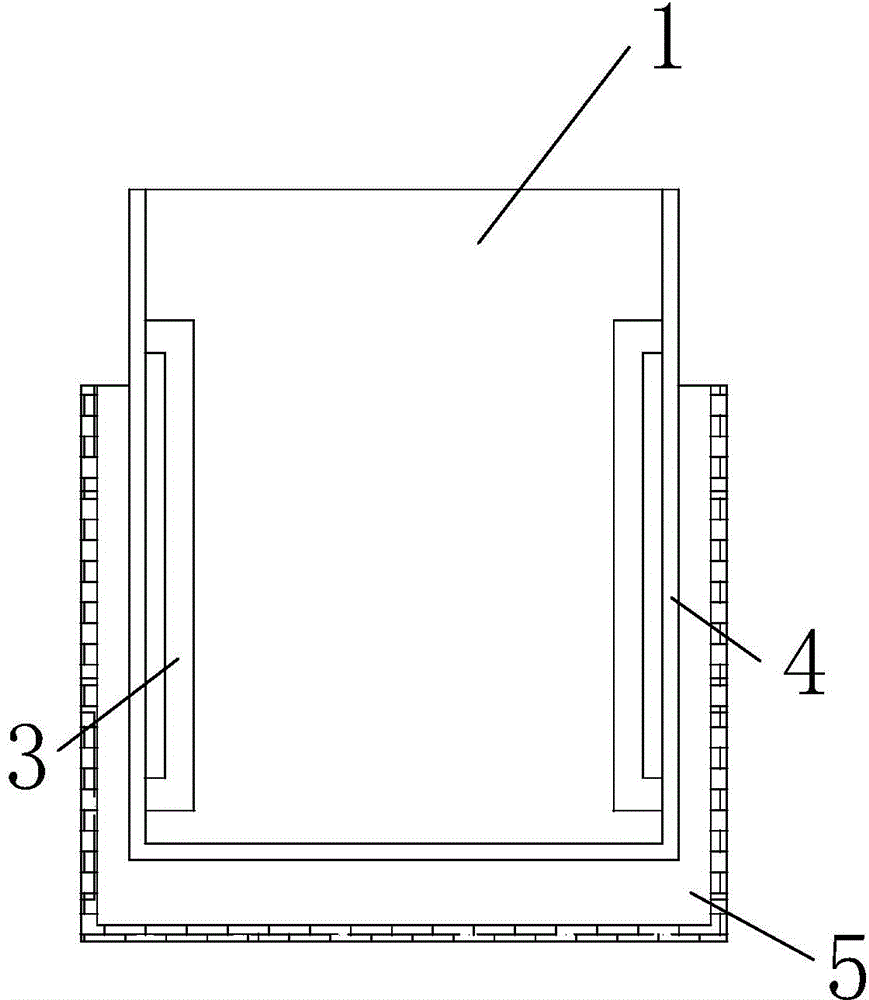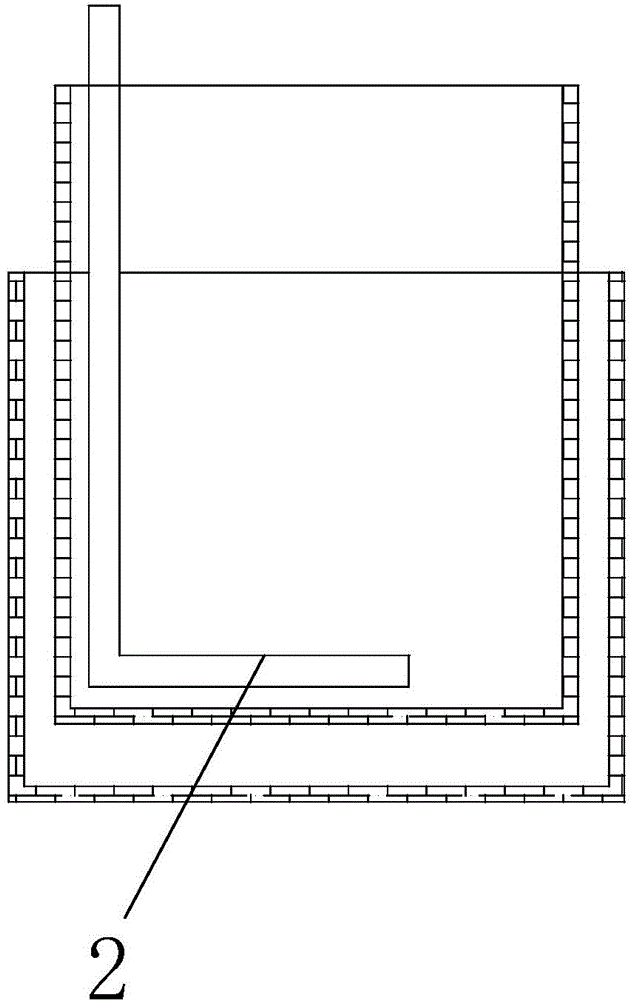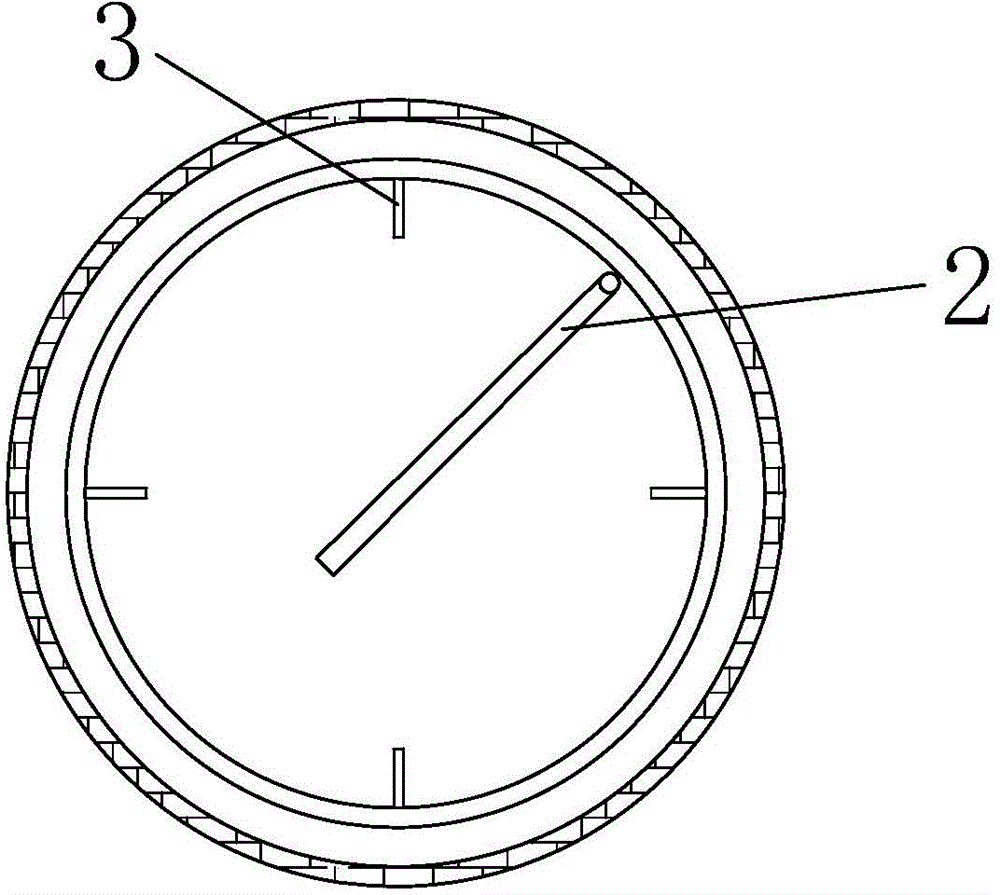A stirring reaction tank for the scale-up cultivation of ore leaching microorganisms
A technology for ore leaching microorganisms and amplified culture, which is applied in the field of stirring reaction tanks, can solve the problems of easy infection of miscellaneous bacteria, insufficient sealing, uneven mass and heat transfer, etc., achieve good mixing and leaching effects, eliminate vortexes, and achieve uniformity The effect of heat transfer
- Summary
- Abstract
- Description
- Claims
- Application Information
AI Technical Summary
Problems solved by technology
Method used
Image
Examples
Embodiment 1
[0030] A nickel ore in Mojiang, Yunnan was used in the test. From the XRD diffraction pattern, the main minerals of the sample are quartz, pyrite and mica. The phase analysis results of nickel in the sample are 0.12% nickel oxide, 0.44% nickel sulfide, 0.040% nickel in silicate, and 0.60% TNi. The experiments compared the experimental effects of chemical leaching in shake flasks and reactors, and verified that the reactors can perform chemical leaching reactions at different temperatures.
[0031] The composition analysis of the nickel ore sample is shown in Table 1-1
[0032] Table 1-1 Sample composition analysis, %
[0033] TF FeO Fe 2 o 3 SiO 2 al 2 o 3 CaO MgO MnO K 2 o Na 2 o Cu 13.34 1.60 17.30 56.14 6.76 0.62 0.86 0.084 1.81 0.064 0.038 Pb Zn P V 2 o 5 co Ni Cr 2 o 3 C S Ig 0.010 0.021 0.026 0.037 0.036 0.60 0.92 0.028 14.46 11.83
[0034] Select a 3L beaker and a 3L ...
Embodiment 2
[0038]The expanded culture of the bacteria was carried out in a 10L stirred reaction tank, and the rotating speed of the stirring blade was 300r / min. The temperature of the water in the tank of the reactor was kept constant at 45°C, and the air was pumped in by the air pump. Timely replenish the evaporated water in the reactor. Add 5000mL of 9K medium, add 200mL of activated moderate thermophilic leaching microorganisms, add 35g / L ferrous sulfate and 10g / L sulfur element as energy substances. The pH of the solution was adjusted to 1.5 with 1:1 sulfuric acid. The change of the pH value in the solution is detected with a pH acidity indicator every day, and the change of the number of ore-leaching bacteria in the solution is detected with a hemocytometer.
[0039] After 7 days of shaking flask culture, the highest bacterial concentration reached 8.0×10 8 individual / mL. However, due to the good phase and mass transfer effect in the stirred reaction tank, the mixing and ventila...
Embodiment 3
[0041] The leaching test of a chalcopyrite concentrate was carried out by using the above-mentioned moderate thermophilic leaching bacteria. First, the bacteria were domesticated and cultivated in a shake flask. When the highest bacterial concentration reached the maximum concentration of 7.5× 10 8 Individual / mL was considered as acclimatization completed. It shows that the moderately thermophilic bacteria have gradually adapted to the growth of chalcopyrite as energy material, and the ability of leaching chalcopyrite has been gradually enhanced. The leaching rate of chalcopyrite was tested without stirring speed, and the optimum stirring speed was 350r / min. The optimal aeration intensity was tested at 300mL / min, 400mL / min, 500mL / min, and 600mL / min respectively, and it was obtained that when the aeration intensity was 500mL / min, chalcopyrite concentrate was leached by moderate thermophilic bacteria after domestication. The leaching time was 30 days, the copper ion concentrat...
PUM
| Property | Measurement | Unit |
|---|---|---|
| radius | aaaaa | aaaaa |
Abstract
Description
Claims
Application Information
 Login to View More
Login to View More - R&D
- Intellectual Property
- Life Sciences
- Materials
- Tech Scout
- Unparalleled Data Quality
- Higher Quality Content
- 60% Fewer Hallucinations
Browse by: Latest US Patents, China's latest patents, Technical Efficacy Thesaurus, Application Domain, Technology Topic, Popular Technical Reports.
© 2025 PatSnap. All rights reserved.Legal|Privacy policy|Modern Slavery Act Transparency Statement|Sitemap|About US| Contact US: help@patsnap.com



